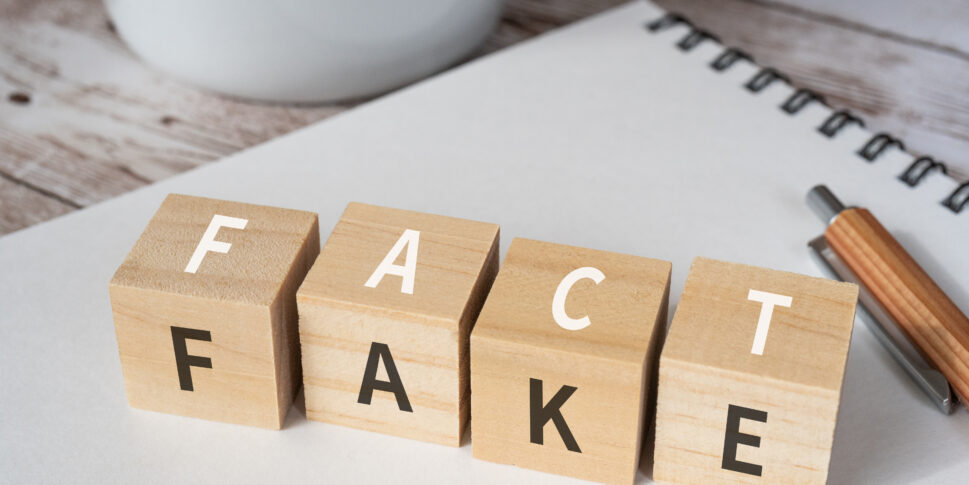
Disinformation is a common facet of journalism that significantly impacts individuals’ thoughts, beliefs, and actions. As fake news stories can spread rapidly through many different platforms, fact-checking journalism becomes essential for preventing misinformation in 2023. Most recently, false rumors around the COVID-19 pandemic and other recent events have led to damaging results.
Sharing inaccurate information can have highly impactful negative consequences. Journalists can control these outcomes by fact-checking and ensuring they only include accurate information in their articles. This piece explains how journalists fact-check to prevent the spread of disinformation and avoid damaging their reputations in 2023.
What Is Fact-Checking?
Fact-checking refers to a step in the journalism process that confirms that all information is accurate in a news article. News organizations use fact-checking journalism to pinpoint issues in writing before its publication. This process prevents the spread of misinformation and ensures that readers view journalists as trustworthy.
This practice consists of a quality control process. A fact checker confirms the details of a piece by analyzing its sources of information and adds suggestions and corrections before the copyediting stage. They pose an outside perspective to prevent inaccuracies and further sculpt a story.
This process utilizes various resources such as firsthand sources, fact-checking organizations, fact-checking services, and experts to corroborate information.
The Importance of Fact-Checking in Journalism
Fact-checking journalism is crucial in several aspects of journalism. Without an accurate piece, news organizations, journalists, and key sources may experience an inaccurate portrayal of information or image. This helps establish trust and confidence between news entities and readers.
Depending on the type of fact-checking, each has different purposes. Editorial fact-checking forms an essential step before an organization releases a story. Alternatively, political fact-checking determines whether the information in political articles and public statements possesses accuracy after release.
When To Fact-Check
In some cases, it’s not always necessary to check the facts. Other instances where journalists provide all sources in a document make fact-checking easy.
Other cases warrant more diligence than typical. If writers and editors continue to add to a piece after fact-checking, there must be more revisions and further verification of the facts. Low-quality sources leaders to locate better references.
Text
It’s essential to fact-check the text of all news stories. While not all journalists provide the details regarding sources, some do, which can help reduce how much time it takes.
After reading the story and marking each fact in the piece, go through each and find sources for these facts. This content analysis process can be as simple as referencing the journalist’s provided sources or as extensive as interviewing victims of an event to corroborate the collected information.
Images
Fact-checkers should always check the validity of images in a piece to determine several details. Images must have the right subject, correct captions, and depictions.
Images and their captions should always receive fact-checking to ensure relevancy to the content. Whether the image includes a cartoon illustration or a real-life photograph, content should be relevant and properly labeled, and informational images should depict data clearly.
Headlines
A fact-checker brings marketable headlines and coverlines and considers the reader’s perspective. A good headline draws attention to a story and summarizes its content in a short sentence. Headlined content should also match source validity and be highly accurate to prevent misinformation, as many individuals read headlines and not content.
Quotes
Depending on the requirements, journalists may fact-check against recorded or written interviews to obtain precise phrasing. It’s not always necessary to fact-check quotes. However, more exact quotes increase a reader’s level of trust in a publication.
Other cases where such interviews don’t exist may lead journalists to return to sources for paraphrasing of previous statements.
How To Fact-Check
It’s necessary to have a source for every fact in a piece. Data, images, and quotes must have reliable sources. With today’s technology, forged posts and social media accounts lead to problematic issues journalists may face when sourcing information for a piece.
While analyzing content, journalists and fact-checkers ensure the content has undergone more than just preliminary fact-checking. Journalists must find exact or paraphrased sources for quotes, find actual data, double-check for fake images, and pinpoint forged posts, screenshots, or social media accounts.
Maintain a list of changes to uphold your reliability and make the process quick while analyzing content. A final report of changes to make goes to the editor before publishing to prevent future problems from occurring. Journalists can use this report to support their claims and dispute readers’ complaints while maintaining who made each change.
Check for Preliminary Fact-Checking
Fact-checking journalism considers whether an outside service has already checked the piece. Larger organizations have their own fact-checkers, while smaller publications may need to outsource additional rounds of fact-checking.
Determine Identifiable Quotes
Quotes from generalized groups can be unreliable. It’s best to get sources for quotes from specific individuals. Journalists can get the most accurate information by interviewing sources again or consulting with official organizations and social media accounts.
Pinpoint Data Yourself
Scientific data and other statistics should receive fact-checking versus relying on a quote from groups or generalized numbers. Journalists utilize scientific papers and data from the government and speak with expert individuals to get precise information.
Search for Fake Images
Another essential step in fact-checking journalism stems from determining whether subjects in included images are accurate or deepfaked. Journalists can utilize Google to reverse search a picture. They can also compare real-life people and places.
Spot Faked Assets
Many find it easy to confuse fake news accounts, websites, and posts with the real thing. Forgeries often have subtle errors. Journalists should look for verified accounts and avoid low-quality images and posts with spelling issues to pose as the most trustworthy.
Conclusion
Whether you’re fact-checking journalism in an editorial capacity or confirming the validity of a news statement, this process is a crucial aspect that upholds organizational trust and journalistic accuracy. If you’re interested in learning more about journalism or journalist jobs, you can find out more with LiberalArtsEDU.org.






